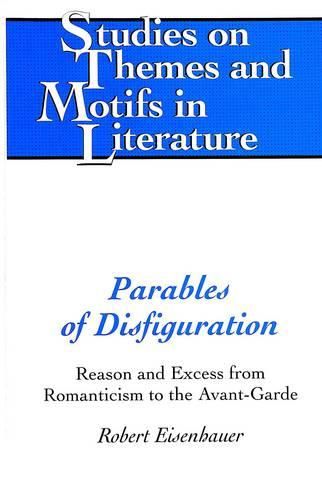Parables of Disfiguration: Reason and Excess from Romanticism to the Avant-garde
Robert Eisenhauer

Parables of Disfiguration: Reason and Excess from Romanticism to the Avant-garde
Robert Eisenhauer
Parables of Disfiguration examines literary and cinematic texts from the Romantic period forward, offering fresh perspectives on the vicissitudes of reason and excess - seen as moments leading to a seizure by sophia (wisdom). Reading canonical works by Percy Bysshe Shelley, but also less familiar poems such as The Revolt of Islam, Robert Eisenhauer draws attention to a series of transits involving the operation of chance and the playful distortions of the scholarly anagram. Hart Crane and Walt Whitman are seen pursuing Dionysiac vocations in the attempt to advance a poetics of melancholy anatomy. Fellini’s landmark film La Dolce Vita recuperates or re-Vamps Roman and more exotic (American) character-types, while parabolically excavating ancient names. Further essays are devoted to William Burroughs’s representation of the Arab underclass (with reference to the Egyptian novelist Naguib Mahfouz), Edward Dorn’s Heideggerian epic Gunslinger, the city in twentieth-century utopian vision, and the concept of the ephemeral in modernist aesthetics. Parables of Disfiguration concludes by reading Wallace Stevens’s wintry and complex Thirteen Ways of Looking at a Blackbird tropically - in the context of haiku verse, the Yucatan, Hunter Thompson’s Gonzo journalism, Plutarch, and an exquisite vehicle combining excess with vindictive righteousness, the Vincent Black Shadow motorcycle.
This item is not currently in-stock. It can be ordered online and is expected to ship in approx 4 weeks
Our stock data is updated periodically, and availability may change throughout the day for in-demand items. Please call the relevant shop for the most current stock information. Prices are subject to change without notice.
Sign in or become a Readings Member to add this title to a wishlist.


